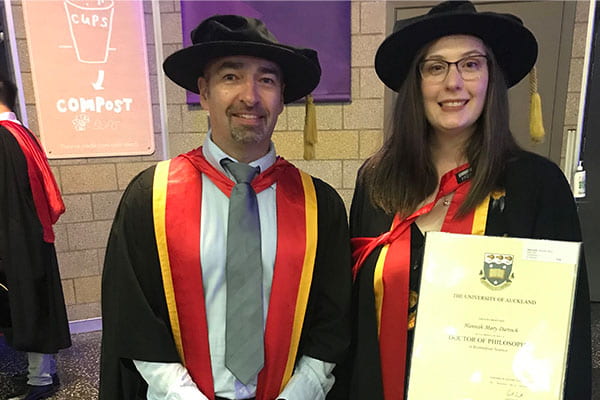From left Associate Professor Chris Hall and Hannah Darroch
A paper titled ‘Infection-experienced HSPCs protect against infections by generating neutrophils with enhanced mitochondrial bactericidal activity’ was recently published in Science Advances by the Hall group. The paper was written by Hannah Darroch, Pramuk Keerthisinghe, Yih Jian Sung, Leah Rolland, Anneke Prankerd-Gough, Phil Crosier, Jonathan Astin and Chris Hall from the Department of Molecular Medicine and Pathology. Hannah Darroch was the first author of the study.
Lymphocytes that form our adaptive immune system provide a memory of previous infectious challenges ensuring we respond with a faster and stronger immune response when we encounter the same pathogen again. This dogma has been a central pillar of immunology and has shaped our view of immunological memory, which still exists in many textbooks today. In the last decade, a growing body of literature has revealed that our innate immune system can also remember previous microbial encounters and generate a stronger secondary response, a phenomenon termed ‘trained immunity’.
By live imaging the innate immune cell response to bacterial infection in larval zebrafish, they have shown that blood stem cells can sense bacterial challenges and generate neutrophils (the most abundant innate immune cell that specialises in killing bacteria) with improved bacteria-killing abilities. This source of neutrophils kills subsequent bacterial infections better by using their mitochondria to produce highly bactericidal reactive oxygen species. Their work suggests that the blood stem cell compartment is an important component of trained immunity that provides a long-lived source of neutrophils with amplified bactericidal activity. As such, manipulating the blood stem cell compartment may provide a new therapeutic strategy to boost neutrophil function and treat infectious diseases.
Link to the paper.
